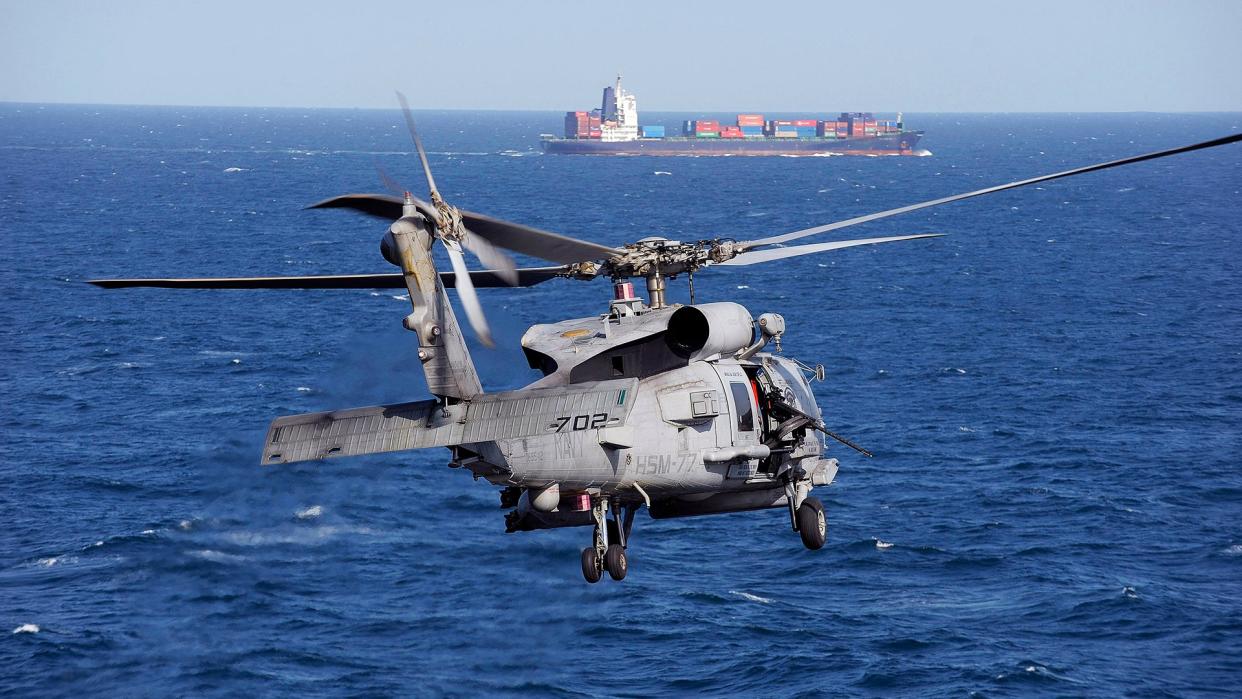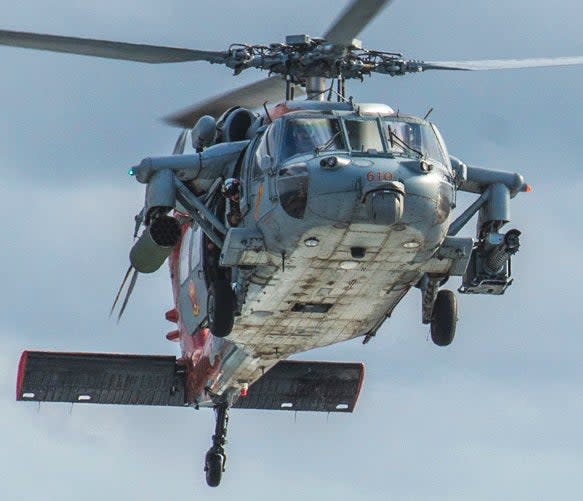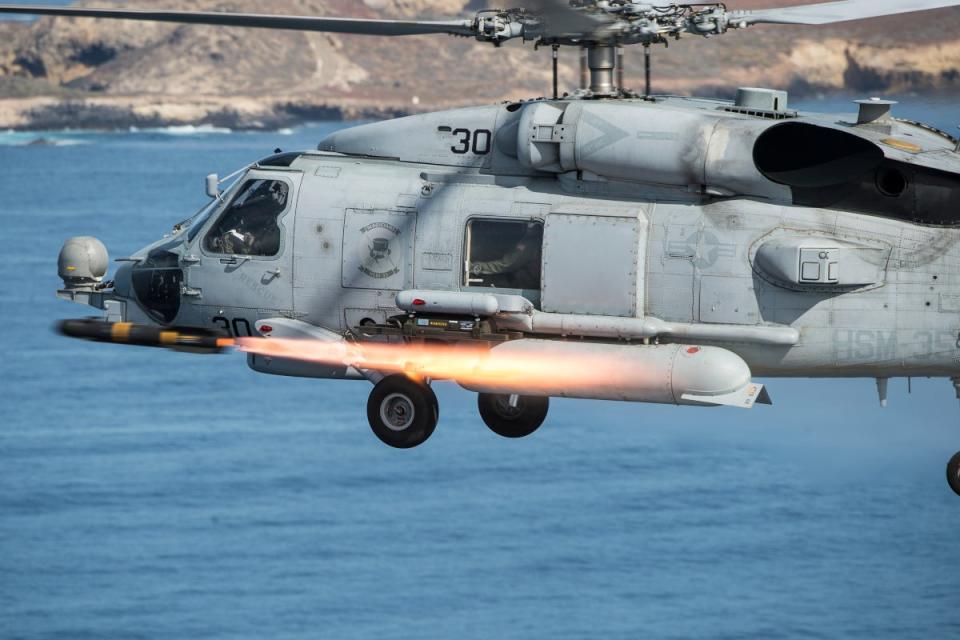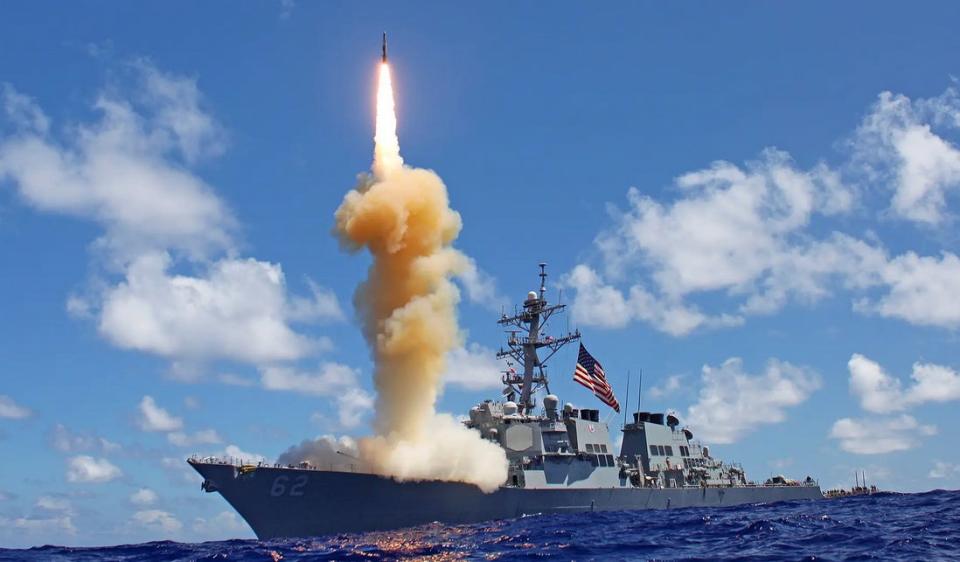After U.S. Navy Helicopters Sink Houthi Boats Are Strikes Next?

Things are really heating up in the southern end of the Red Sea. Houthi attacks on shipping moving through the chokepoint not only continue, but appear to be getting more complex. Now U.S. Central Command has said Navy helicopters were fired upon by Houthi raiding craft while responding to a distress call from a cargo ship. The helicopters fired back, sinking the boats. This comes as a report claims the U.S. and the U.K. are planning to strike back against Houthi forces.
The statement from CENTCOM about the latest incident reads as follows:
"Iranian-backed Houthi small boats attack merchant vessel and U.S. Navy helicopters in Southern Red Sea
On Dec. 31 at 6:30am (Sanaa time) the container ship MAERSK HANGZHOU issued a second distress call in less than 24 hours reporting being under attack by four Iranian-backed Houthi small boats. The small boats, originating from Houthi-controlled areas in Yemen, fired crew served and small arms weapons at the MAERSK HANGZHOU, getting to within 20 meters of the vessel, and attempted to board the vessel. A contract embarked security team on the MAERSK HANZGHOU returned fire. U.S. helicopters from the USS EISENHOWER (CVN 69) and GRAVELY (DDG 107) responded to the distress call and in the process of issuing verbal calls to the small boats, the small boats fired upon the U.S. helicopters with crew served weapons and small arms. The U.S. Navy helicopters returned fire in self-defense, sinking three of the four small boats, and killing the crews. The fourth boat fled the area. There was no damage to U.S. personnel or equipment."
UKMTO has put out a warning regarding this latest escalation. Reports state that at least 10 Houthi fighters were killed in the skirmish.

https://twitter.com/AlArabiya_Eng/status/1741502475411075496?s=20
The helicopters involved would have been MH-60S/R Sea Hawks. This would be a first for the type which has evolved into relatively potent anti-surface warfare platforms when it comes to destroying small boats. Beyond their crew-served machine guns, which include M240 and M2 types, they can carry AGM-114 Hellfire missiles, as well as laser-guided rockets. The M197 20mm gatling gun can also be carried in a fixed position on the helicopter's stub-wing pylons.

Combined with an outstanding sensor suite, these weapons give the MH-60s critical force protection capabilities and the ability to rapidly engage small surface targets in scenarios like these.

Just hours prior to the small boat engagement, USS Gravely shot down two anti-ship ballistic missiles during an assault on the Maersk Hangzhou, which was struck by a weapon while traveling in the Southern Red Sea. CENTCOM's statement read:
"The Singapore-flagged, Denmark-owned/operated container ship requested assistance, and the USS GRAVELY (DDG 107) and USS LABOON (DDG 58) have responded to the ship. The vessel is reportedly seaworthy and there are no reported injuries. While responding, the USS GRAVELY shot down two anti-ship ballistic missiles fired from Houthi-controlled areas in Yemen toward the ships. This is the 23rd illegal attack by the Houthis on international shipping since Nov. 19."
https://twitter.com/CENTCOM/status/1741259817602429357?s=20
Maersk has subsequently suspended all Red Sea transits for at least 48 hours.
https://twitter.com/AFP/status/1741410569716933106?s=20
The layering of different types of attacks and what seems like some effort to draw U.S. warships to an area that is then targeted by anti-ship ballistic missiles seems to be evolving.
It's worth addressing the anti-ship ballistic missile (ASBM) revelation in its own right. This class of weapon has made its operational debut in this ongoing crisis and they are scoring hits. This is a major development as ASBMs are now being developed by multiple nations around the globe — both friendly and unfriendly. We have discussed the fact that the Houthis have possessed these weapons for some time, all of which descend from Iranian designs, but the fact that a they are being used repeatedly and successfully is troubling. While many have missed, some have met their mark and with every launch, the Houthis and especially their Iranian benefactors, are learning.
https://twitter.com/Aviation_Intel/status/1728966302310830332?s=20
Shooting these types of weapons down is a complicated matter. Depending on their flight profile, engagement envelopes can be very limited using an Aegis combat system-equipped destroyer's primary armament, which can only shoot down these weapons during the terminal stages of their attack. In ballistic missile defense (BMD) mode, ships equipped with SM-3 interceptors and the proper BMD hardware can attempt to intercept ballistic missiles during their midcourse portion of their flight, much farther away, but there has been no indication that these interceptors have been used in this conflict. The very short-range of these Houthi ASBMs likely fall well below the SM-3's engagement envelope too. SM-3s are also precious and very expensive weapons that are not available in huge numbers. It's also worth noting that in all but the latest baseline configurations, American Aegis surface combatants equipped with ballistic missile defense capability could only be in BMD mode or in the standard anti-air-focused mode at any given time, which greatly limited their flexibility and defensive capabilities, especially in a littoral combat situation like this one.

Regardless, the ASBM threat is now very real and the weapons the Houthis are using pale in comparison to those now deployed by China.
The exact state of the fledgling Operation Prosperity Guardian, a multi-nation endeavor to provide security to ships transiting the Red Sea, remains unclear. While small convoy operations appear to have occurred, there have no large multinational combined operations that have been observed. With multiple partners that are sending ships not being willing to put their vessels under U.S. control, the exact amount of coordination, and what ships each country is will to provide security for, remains unclear.
After this latest deadly incident, there is a report from the Sunday Times that the U.S. and the U.K. are preparing to strike Houthi targets. There have been repeated cries from many in the national security sphere for the U.S. to attack the Houthis in an attempt at deterring future attacks. While this may seem logical to some degree, there are many other concerns that need to be factored, including the safety of U.S. forces in the region and if doing so would actually have any impact, let alone possibly playing right into the Houthi's — and especially Iran's — hands. Houthis usually don't back down just because of a bloody nose — just ask Saudi Arabia about that. Still, just playing defense comes at a cost too. You can read all about the complexity of this issue in this feature from two weeks ago that is arguably more relevant now than then.
The Sunday Times report states that the U.K. is readying a series of air strikes alongside the U.S. and possibly other European countries. It claims that the U.S. and the U.K. will make a joint statement that will warn the Houthis to stop their attacks or face the consequences in the form of kinetic actions. This would serve as a final warning before strikes are ordered.
The War Zone has reached out to multiple sources but could not confirm the veracity of this report at this time.
“The situation in the Red Sea is incredibly serious, and the Houthi attacks are unacceptable and destabilizing," a U.K. government spokesperson responded when we asked about the Times report. "As you would expect, while planning is underway for a range of scenarios, no decisions have yet been made and we continue to pursue all diplomatic routes. We call for the Iranian-backed Houthi to cease these illegal attacks and we are working with allies and partners to protect freedom of navigation."
A spokesman for the White House National Security Council declined comment and the Pentagon did not return a message seeking comment.
Meanwhile, the messaging from the Houthis has not changed a bit:
https://twitter.com/M_N_Albukhaiti/status/1741518650547241466?s=20
Another tweet reads (machine translated):
"Although we fulfilled our religious, moral and humanitarian duty towards our Palestinian brothers, we felt ashamed as we watched the martyrs of Palestine, especially the women and children. However, now that our blood was mixed with their blood today, this has greatly reduced our burden. (The Sacred Month for the Sacred Month and the Sacred Months are retaliation. So whoever transgresses... against you, so attack him In the same way as he assaulted you, and fear God and know that God is with the righteous.)"
https://twitter.com/M_N_Albukhaiti/status/1741505389995200767?s=20
We will keep you informed as the situation develops.
Contact the author: Tyler@thedrive.com

